ARMAN – GALERIE DANIEL TEMPLON | PARIS
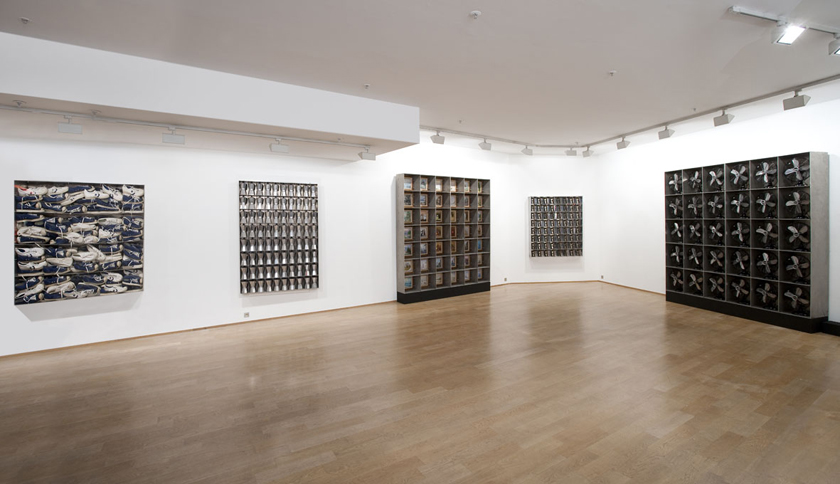 GALERIE DANIEL TEMPLON
GALERIE DANIEL TEMPLON
ARMAN
27 novembre – 31 décembre 2010
30 rue Beaubourg – Impasse Beaubourg – 75003 Paris – France / T : +33 (0)1 42 72 14 10 / info@danieltemplon.com / http://www.danieltemplon.com
Mardi-samedi 10h-19h / Tuesday-Saturday 10am-7pm
Visuels-presse-Arman
Text by Vittoria Biasi
The Daniel Templon’s Gallery witnesses the trendiness of contemporary art language by showing the sculptor Arman’s Poubelles during 1974 and Racine during 2000. The Daniel Templon’s proposes the exhibition of the last twenty years of Arman’s Accumulations on the occasion of his retrospective at the Centre Pompidou.
Arman’s – in the world Arman Fernandez – has been the co-founder of the NOUVEAU REALISME movement -theorized by Pierre Restany- sharing the path with Yves Klein, Jean Tinguely, Martial Raysse, César Baldaccini, Daniel Spoerri, Jacques Villeglé, Christo, Mimmo Rotella, Niki de Saint Phalle and others.
The Nouveaux Réalistes take possession of objects, to which they give a universal value showing the reality in every way.
The object, has entered the world of art through the ready-made of Duchamp, is a witness of the expressiveness in the real world.
Arman (1928-2005) picks up lots of objects, rubbish and put them in glassed boxes. In this way he realizes the Poubelles’s series. He affected the sculpture in the second half of the Twentieth century and he has developed a sculptural path around the ability to manipulate the objects. His poetics crossed many phases. First, the artist has worked out a method of destruction/rearrangement, surrendering to his rage, destruction of objects that further on are reassembled fixing them on wooden board with a constructivist significance (Colère de meubles HenrII). It follows the last twenty years phase of Accumulations shown by Templon’s. Through the Accumulations the artist welcomes the object as a wholeness and proposes it as a repetitiveness. The artist works an object (like a violin, a tube of paints or dental plate) and shows it as an expansive language between matter and show, memory and future. In such a way he puts into effect, inside the work, the mechanism of making the objects spectacular, exhibited as goods on display, as a protagonist of the world.
The Arman’s object seems to rise to the surface from the infinite, from a productive repetition, not an intellectual or aesthetic one, nevertheless of daily use. The repetitiveness of every day life celebrates the conflict and the secret of life. The second half of 1900 manifested its attention for the eastern thought that hosts the daily object as a ritual, as a tribute to the superior thought. The sublimation is not about the object but the daily use of it, in participating to the conflict between the human being and the real life.
Vittoria Biasi
Translated by Salvatore Rollo at salvatore_rollo@fastwebnet.it
.
Testo di Vittoria Biasi
La Galleria Daniel Templon ha testimoniato le tendenze dei linguaggi artistici contemporanei ed ha esposto le opere dello scultore Arman nel 1974 presentando Pubelles e nel 2000 Racine.
In occasione della retrospettiva che il Centre Pompidou dedica all’artista (1928 – 2005), la Galleria Templon propone le opere Accumulations, realizzate da Arman negli ultimi venti anni.
Arman, pseudonimo di Arman Fernandez, è stato tra i fondatori del nouveau realisme, teorizzato da Pierre Restany, e ha condiviso il percorso con Yves Klein, Jean Tinguely, Martial Raysse, César Baldaccini, Daniel Spoerri, Jacques Villeglé, Christo, Mimmo Rotella, Niki de Saint-Phalle e altri artisti. I Nouveaux Réalistes si appropriano di oggetti, cui attribuiscono un valore universale, mettendo in mostra la realtà nei suoi diversi aspetti. L’oggetto, entrato nel mondo dell’arte con i ready-made di Duchamp, testimonia l’espressività dell’universo reale.
Arman raccoglie una quantità di oggetti, di rifiuti e li pone in scatole sotto vetro realizzando la serie Poubelles. Arman ha influenzato la scultura del secondo Novecento e ha costruito un percorso scultoreo sulle possibilità di manipolazione dell’oggetto. La sua poetica ha attraversato varie fasi. L’artista ha elaborato dapprima un metodo di distruzione/riorganizzazione, abbandonandosi a momenti di collera, di distruzione di oggetti poi ricomposti e fissati su assi di legno (Colère de meubles HenrII), secondo un valore costruttivista. Segue la fase delle Accumulazioni, di cui la Galleria Templon espone quelle dell’ultimo ventennio. Con le Accumulazioni, l’artista accoglie l’oggetto nella sua integrità e la propone nella sua ripetizione. Arman interviene sull’oggetto – un violino o un tubetto di colore o una dentiera – e lo presenta in un linguaggio espansivo tra materia e spettacolo, tra memoria e futuro. In tal modo egli mette in atto, all’interno dell’opera, il procedimento della spettacolarizzazione dell’oggetto, che è presentato come una merce in vetrina, il protagonista di una società.
L’oggetto di Arman, come in Café Serré, (1992, accumulation of expresso coffee makers in aluminum compartments) o in Crowded finale, (1991, accumulation of Converse sneakers on four shelved aluminum box with Plexiglas cover) sembra emergere da un mondo dell’infinito, da una monotonia produttiva, non intellettuale o estetica, ma di uso quotidiano. Nella quotidianità ripetitiva si celebra il conflitto e il segreto dell’esistenza. Il secondo Novecento ha manifestato attenzione per il pensiero orientale, che ospita l’oggetto quotidiano nel rito, nell’omaggio al pensiero superiore. La sublimazione non è nell’oggetto, ma nell’uso giornaliero, nella partecipazione al conflitto tra essere umano e realtà.
Vittoria Biasi

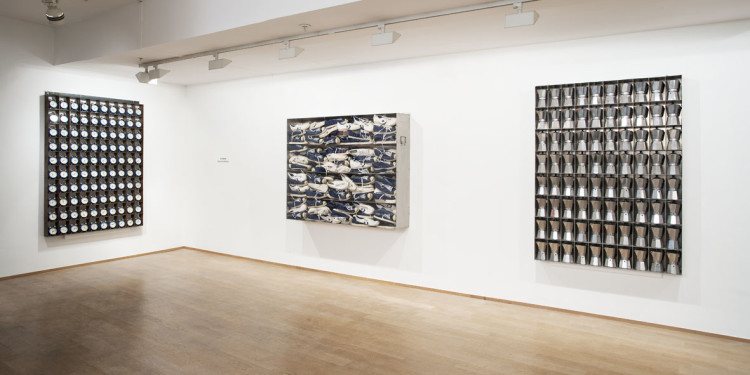
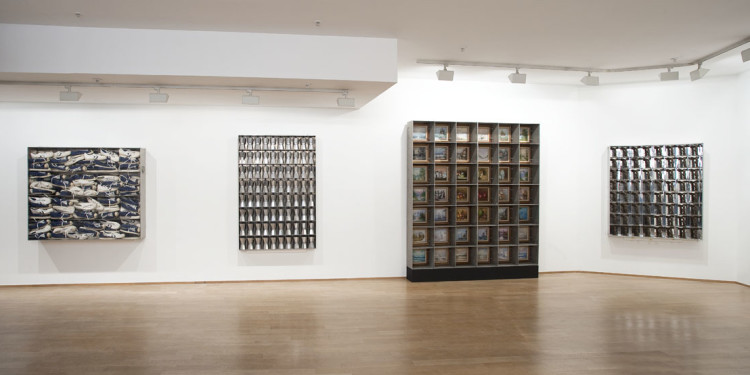
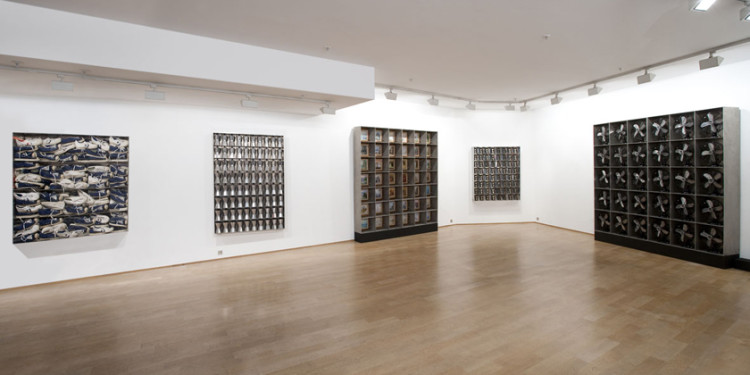
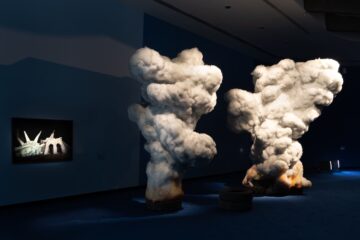


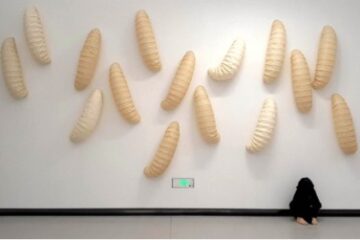

No Comment